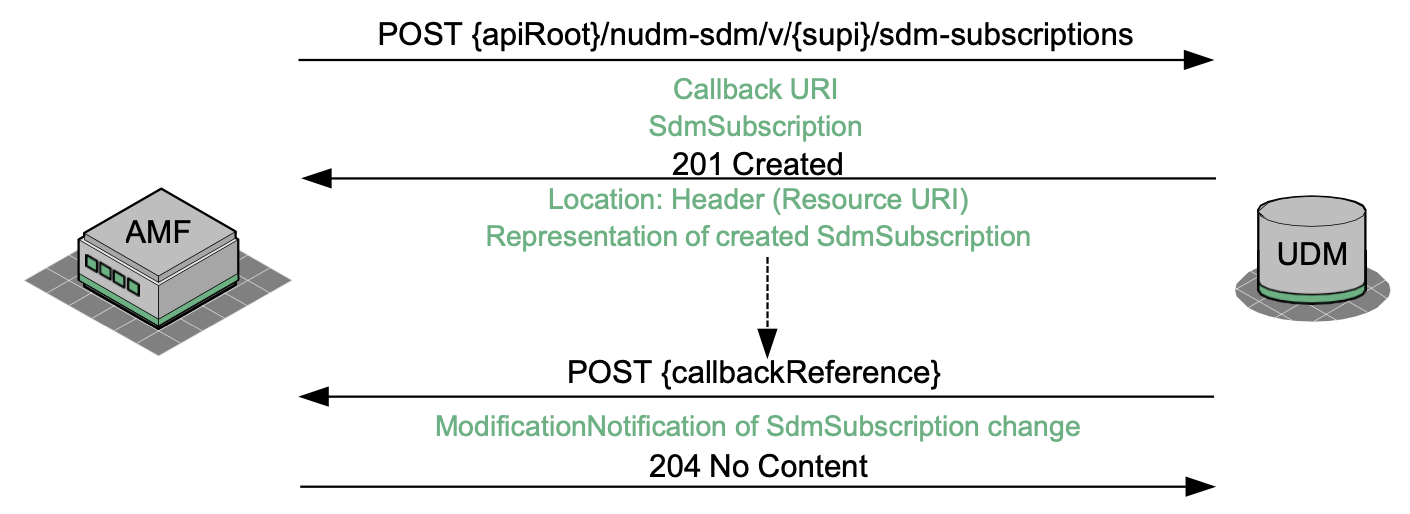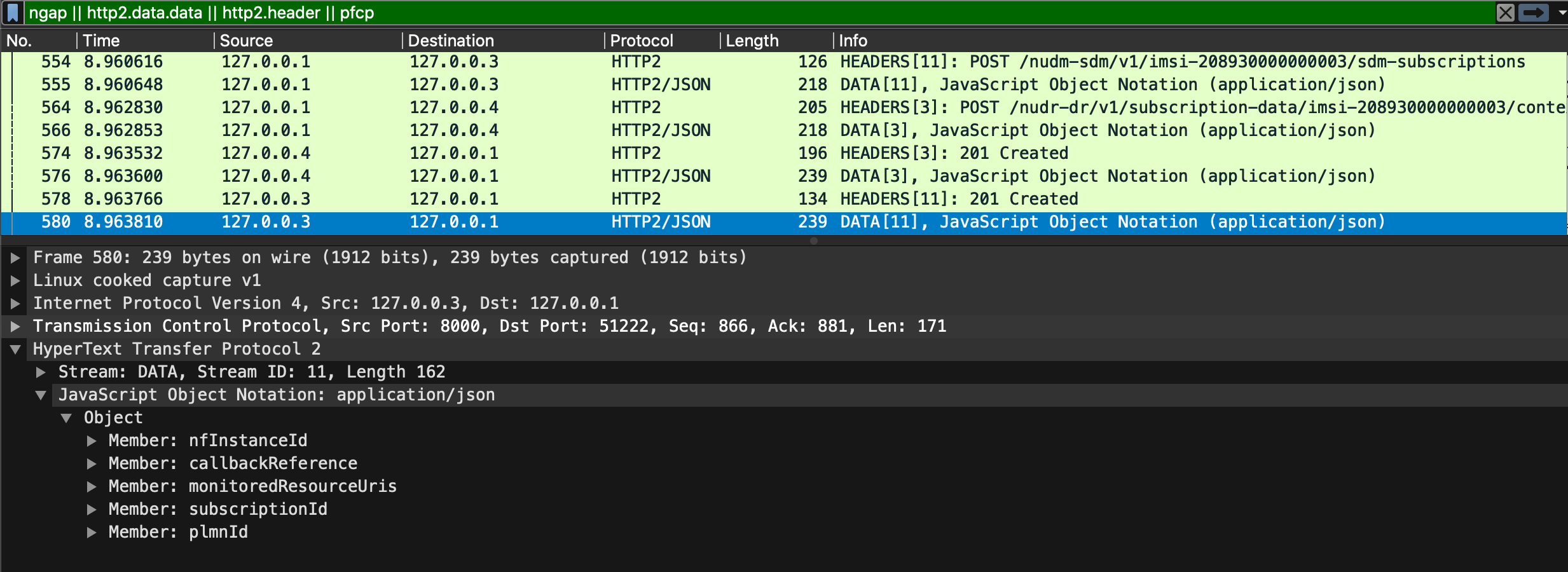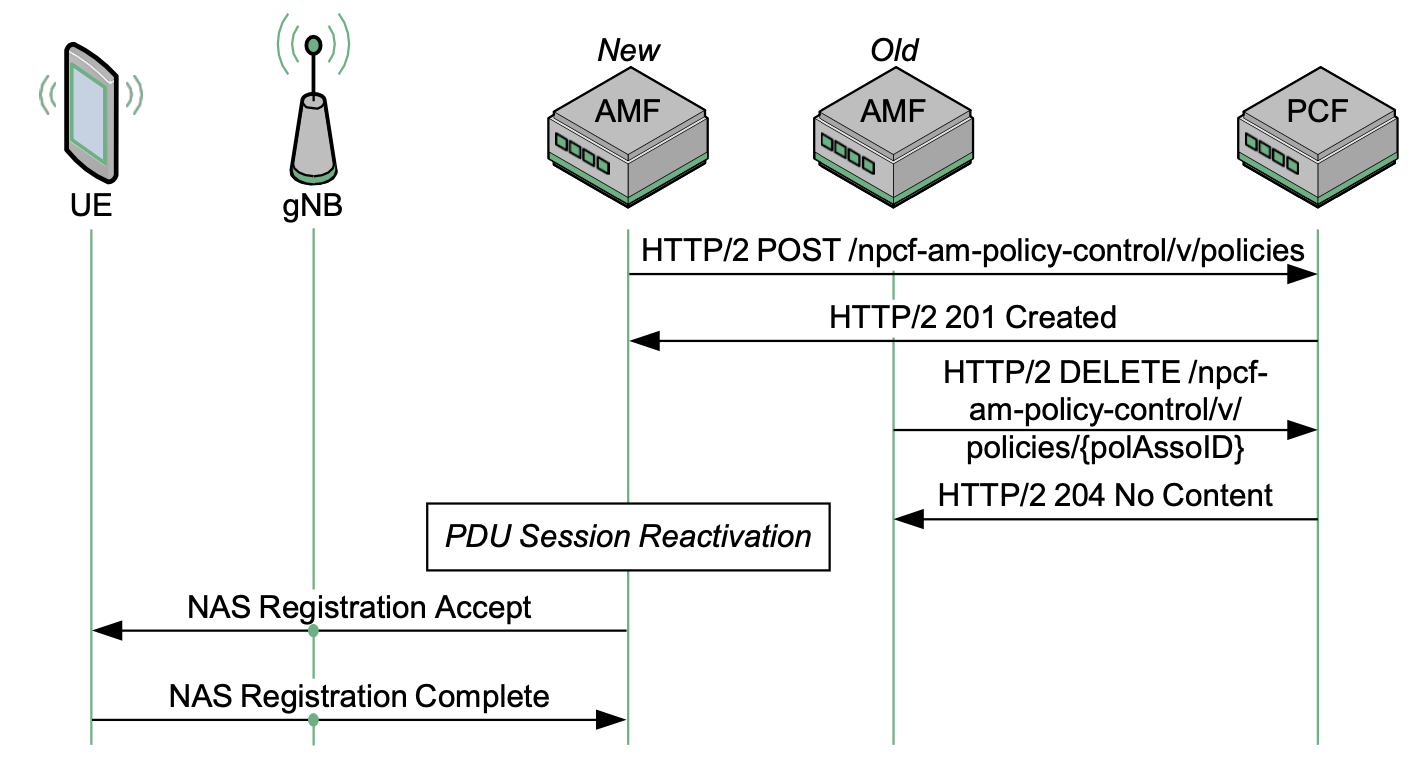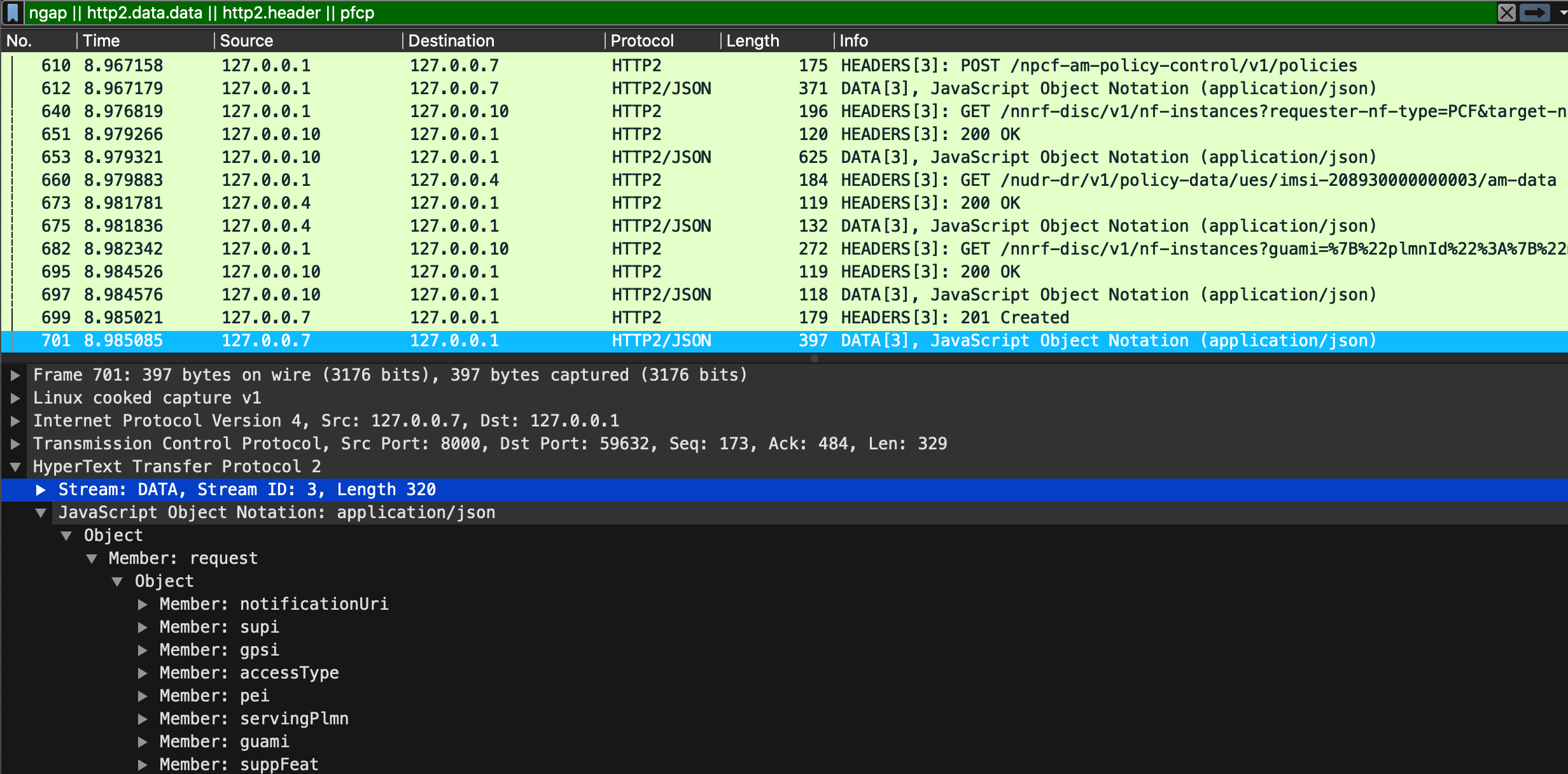Device Registration – 2
Registration – Part 3
The following figure outlines the third part of the 5G registration:
Note: there is no old AMF in our use case.
(1) Subscriber Data Acquisition
Once the AMF is registered against the subscriber, the AMF will acquire the subscriber profil.
(2) Subscriber Data Subscription
Following successful acquisition of the subscriber profile, the AMF must be kept informed as to whether or not updates to the subscriber profile take place. To achieve this, the AMF will use the SubscriberDataManagement service offered by the UDM. If subscribed, the UDM will send notifications to the AMF whenever a data change in the subscription data takes place.
Registration – Part 4
The following figure outlines the final part of the 5G registration:
Note: there is no old AMF in our use case.
(1) Policy Association Establishment
At this stage the AMF is able to conduct an access and mobility policy association establishment with the PCF. To achieve this, the AMF can use the Npcf_AMPolicyControl service.
Within the Npcf_AMPolicyControl request, the AMF will provide its own identification, in addition to the subscriber undertaking the registration. Location information can be provided at this stage, which may influence the dynamic policy decision taken by the PCF.
In response, the PCF will provide the policy data associated with access and mobility management.
Note: If a PDU session is already established, it will be activated; otherwise, we will initiate the NAS Registration procedure directly.( we will discuss about the PDU session in the next section)
(2) NAS Registration Accept
Assuming the registration process is successful, the AMF will respond to the device with the NAS Registration Accept message.The Registration Accept is carried within the NGAP Initial Context Setup Request message. As such, an Initial Context Setup Response message will be returned by the gNB.








